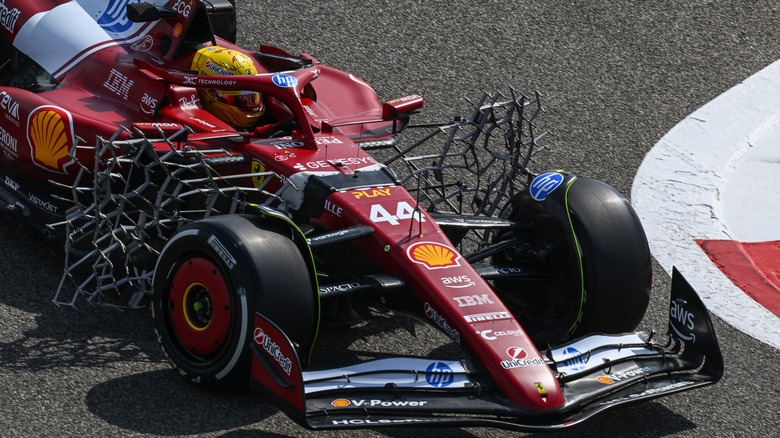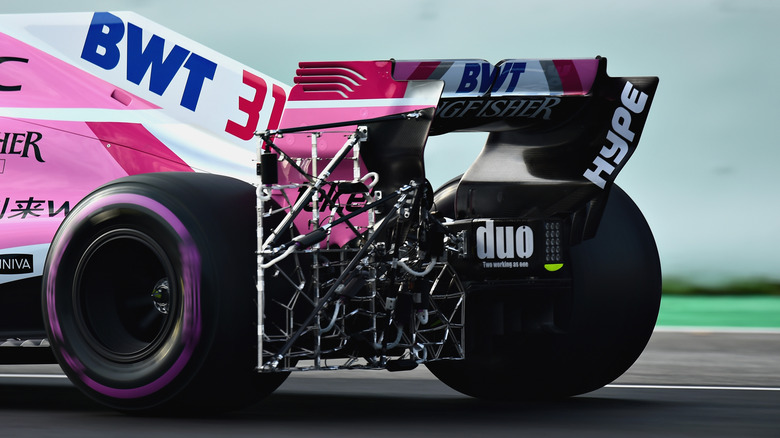What Are The Metal Grids On F1 Cars For?
The grids which can be seen on F1 cars during testing are called aero rakes. They consist of a series of pitot tubes and Kiel probe sensors, which measure the flow of air as it crosses over, under, and through the various gaps and crevices of the F1 car's body. These grids can often be seen mounted just behind the front tires, to measure the wake from them while driving, in addition to on top of the body, and upon the rear wing too. Rear wings and rear spoilers make a difference on a car's downforce, so even small tweaks here could have a profound effect on an F1 car's cornering or top speed abilities.
The data captured from these sensors, which is transferred to the team in almost real-time, is then used to compile a visual map of airflow, which allows the engineers to make and measure tweaks to the car's aerodynamics. These tweaks will then be tested in the same method, and the results can then be compared using the airflow maps, in order to determine whether the adjustments made are achieving the desired result or not.
Moreover, the data can also be compared to what the team is achieving in simulated tests, to see whether or not the simulated results are translated through to real-world driving. Some of the fastest F1 cars of all time were developed using this method, in addition to wind tunnel testing and simulations too.
The purpose of these metal grids is improve racing pace
The goal here shouldn't surprise you — it's to ultimately make the car faster. Not that the grids themselves improve pace — if anything, a metal frame on the car will, of course, slow it down physically — but the data gained from doing so enables the team to most effectively measure and manipulate airflow, which helps hugely when it comes to setting up the car for ultimate pace.
Rob Smedley, ex-Ferrari and Williams engineer explains the specifics of what aerodynamics teams are searching for when analyzing the data returned from these grids. "We're usually looking for things like separation, as in where the flow's separating and we're not getting decent flow structures across the surfaces of the car. We can see if there's a point where the front wing 'falls over', as we term it, where we're not generating the downforce on the front anymore". This is data that simply cannot be obtained by observing the car with the naked eye.
Sometimes, adjustments can be made on the fly, and then the results will be immediately available courtesy of the grids. However, some changes require the teams to get hands-on with the car, in which case, results won't be available until the car is able to get back on track once again.
It might be old technology, and drivers need to be cautious they don't go too fast as the grids may fall off, but this is the best way F1 teams have of measuring real-world aerodynamic performance, which provides them the information necessary to make tweaks which will favor on-track performance.

